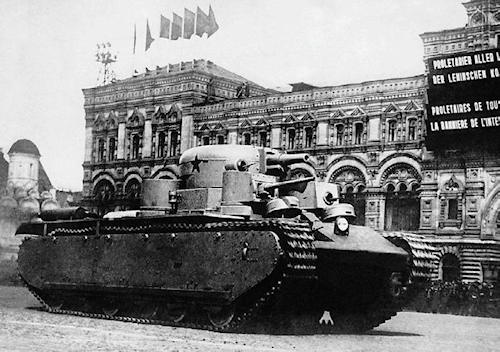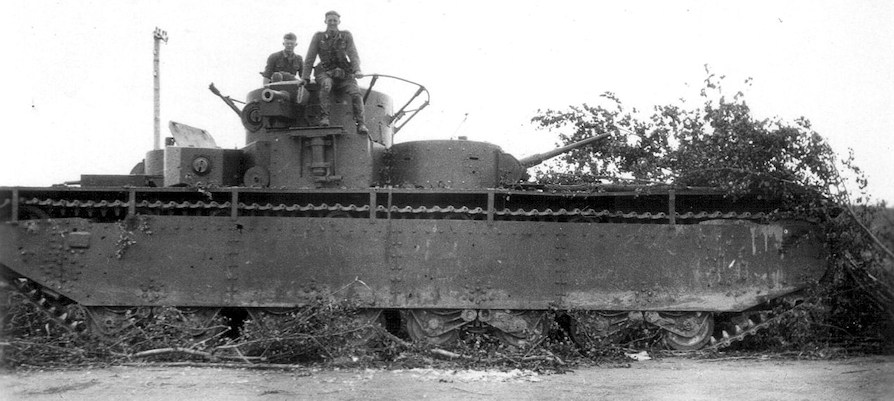The tank T-35 it was one of the largest armored vehicles developed in the Soviet Union in the decade before the Second World War. It must be considered the “patriarch” of Soviet heavy tanks.
The vehicle was equipped with multiple armament (remarkable for the period); it consisted of one 76.2 mm gun, 2 x 45 mm guns and 6/7 7.62 mm machine guns. However, the vehicle showed shortcomings: the low mobility and the (relatively) light armor thickness compared to the tonnage nullified all the tactical advantages of the armament. These problems were manifested in full force during the Winter War (1939-40).
The cart T-35 it was conceived and designed starting from 1933, and it should be emphasized that the British tank was taken as a model Vickers A1E1 Independent (it is no coincidence that the Soviets had bought some models).
Il T-35, to some extent, was considered innovative for the period but at the same time anachronistic in other respects. In fact, the vehicle managed to integrate new solutions and equipment such as the tracks (of clear German origin) and the radio apparatus equipped with a circular antenna around the main tower. On the other hand, the complex of multiple turrets was not very efficient.
The armored vehicle was equipped with five turrets: a main one, which mounted the 76.2 mm cannon and a machine gun; two secondaries for the 45mm guns, fitted
one at the front on the right and the other at the rear on the left, both with an additional slot for a machine gun; lastly two turrets only for machine guns positioned at the front on the left and at the rear on the right. In some models the armament was corroborated by a rear machine gun which was followed (sometimes) by a flamethrower.
It should be noted that in the very first specimens of T-35 the secondary guns were 37mm.
Among the most significant shortcomings of the tank T-35 there was certainly the guide; driving the vehicle was somewhat complicated, and in fact compromised the movement of the vehicle.
The start of deliveries of T-35 to the armored units of the Red Army took place around 1935. The test by fire for Soviet tanks took place in 1940 during the Winter War. The T-35 in that conflict he did not give the desired results, indeed he showed all his weaknesses. However, it was decided to keep it still in service…
 On 22 June 1941 theOperation Barbarossa; i T-35 they were used against the German army which was invading the Soviet Union, but they never posed a serious threat.
On 22 June 1941 theOperation Barbarossa; i T-35 they were used against the German army which was invading the Soviet Union, but they never posed a serious threat.
It must be remembered that many wagons T-35 operational at the time of Operation Barbarossa were lost due to technical and mechanical failures, and not due to actions by the enemy.
Dal T-35 the tank was derived T-100 from 58 tons (entered service in 1939), the production of which was immediately abandoned in favor of the heavy tank KV-1 (read article “The armored vehicles of the Red Army: the KV-1 tank”).
The tank T-35 it had a weight of 45 tons. The length of her was 9.72 meters, the width 3.20 meters and the height 3.43 meters. Ground clearance was 0.58 meters.
Engine power was 500 hp. The T-35 it could reach a maximum speed of 30 km/h, while the range was 150 km. The armor was 11-30mm.
Armament consisted of 1 x 76.2 mm gun, 2 x 45 mm guns and 6/7 7.62 mm machine guns. The tank could count on a crew of 10 men.

